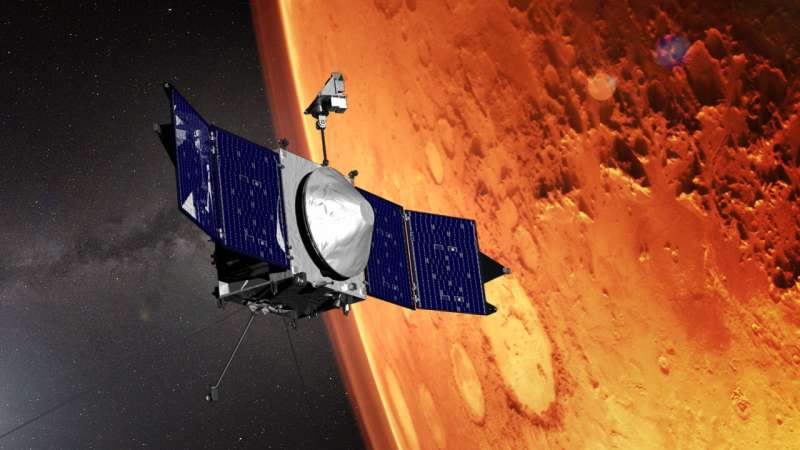- Discovery of two new types of aurora at Mars, and characterization of all three types of aurora and of their causal mechanisms.
- First comprehensive measurements of winds in the Martian upper atmosphere, indicating substantial (and unexpected) interaction between different layers in the atmosphere.
- Revealed the unexpected complexity and dynamic nature of the Martian magnetosphere, with its influence on the behavior of the upper atmosphere (including variability in escape and occurrence of aurora).
Now with arrival of the Perseverance rover to the surface of the planet in February, MAVEN will continue to carry out both relay communications support for NASA's surface missions and joint data analysis with these missions and with the orbiters already at Mars. In addition, MAVEN will be working on collaborative data analysis with the current missions and with the missions about to arrive at Mars.
Last year, in preparation for providing communications relay support, MAVEN reduced the highest altitude in its orbit using an aerobraking maneuver, a process taking advantage of the Martian upper atmosphere to place a small amount of drag on the spacecraft. MAVEN also adjusted the orientation of its orbit, to better monitor data from Mars 2020 during its entry, descent and landing.
When not conducting relay communications, MAVEN will continue to study the structure and composition of the upper atmosphere of Mars. MAVEN has enough fuel to operate until at least 2030.
MAVEN's principal investigator is based at the University of Colorado's Laboratory for Atmospheric and Space Physics, Boulder, which also leads science operations. NASA's Goddard Space Flight Center in Greenbelt, Maryland, manages the MAVEN project. Lockheed Martin Space built the spacecraft and is responsible for mission operations. NASA's Jet Propulsion Laboratory in Pasadena, California, provides navigation and Deep Space Network support, as well as the Electra telecommunications relay hardware and operations.



